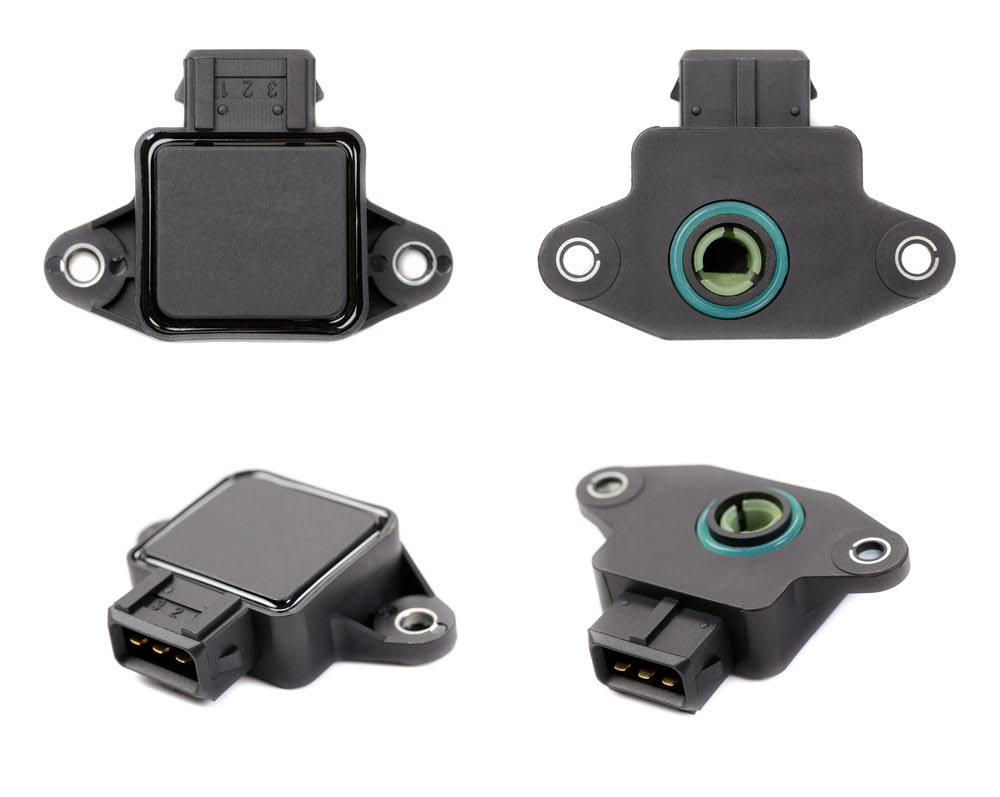

How are Car Sensors Used to Improve A Car’s Performance?
In the mid-1950’s, hot rodders would flock to abandoned air strips to “drag it out” and see how quick and fast their cars could travel down a quarter mile. They would change spark plug ignition timing, twist the carburetor idle screw slightly and even take out water pumps to save an extra 20 lbs. and increase speed by one MPH. Today’s modern engines make fine tuning and tinkering unnecessary by utilizing a series of car sensors that play key roles to get the best performance possible for your vehicle.
The sensors used in production cars sold in the United States are often mechanical in nature and designed to play a part in controlling engine emission levels. As technology has improved, virtually all mechanical components or systems use sensors to make adjustments on the fly. In fact, sensors are able to send data to the engine control module (ECU) to instantaneously adapt to current driving conditions.
The information below will outline some of the most common engine and transmission sensors used on production cars, trucks and SUV’s sold in the United States, how they work, and the job they are designed to accomplish.
The Oxygen Sensor
Commonly referred to by frustrated car owners who have failed an emissions test as the O2 sensor, the oxygen sensor is an important part of how your vehicle handles emissions. It lets your diagnostic computer know how much unburned fuel is still present in the exhaust. On most cars, there are up to four oxygen sensors that are located in two distinct locations.
The front bank oxygen sensors are located on or near the exhaust manifold. These sensors measure the exhaust emission levels immediately after combustion. The second bank of oxygen sensors are located after the catalytic converter; as to monitor the emission levels after it’s gone through the converter. If the mixture of air and fuel is correct, very little will change. This sensor monitors if your fuel is rich, lean, or average, which is right where it should be. Based on information from the oxygen sensor, the powertrain control module (PCM) alters the amount of fuel put into the mixture.
The MAP Sensor
The MAP, or manifold absolute pressure sensor, monitors the intake volume to change the frequency or voltage if the pressure in the manifold changes. Essentially, it’s a component of ignition system and relays data from the intake manifold, to the ECU/PCM. If adjustments are needed, the ECU will adjust the ignition spark level to ensure the fuel burns efficiently. When the sensor doesn’t work, reduced performance is the result. It is recommended to have a professional mechanic complete the MAP sensor replacement as it will require resetting error codes in the ECU.
Throttle Position Sensor
The throttle position sensor reports the position of the gas pedal to the ECU. The computer then adjusts the position of the throttle plate, which helps determine the amount of air flow to the engine and the amount of fuel to be injected for the required ratio of air-fuel mixture. The throttle position sensor also plays a part in the shifting of gears in an automatic transmission. If this sensor stops working, the car's computer will not be able to calculate the right amount of fuel to be injected in the system, and it may not be able to change the gears. If it becomes damaged, you will need a professional mechanic to replace the throttle position sensor.
The Mass Air Flow Sensor
The mass airflow (MAF) sensor measures the amount of air entering the engine. For an engine to perform properly, it needs a specific amount of air-fuel mixture. The ECU or PCM reads the amount of air coming into the engine from the MAF sensor and then calculates the correct amount of fuel needed for proper engine performance. If the sensor goes bad, the engine will not know the right amount of fuel to add, causing problems including poor gas mileage, lack of power and more. A damaged MAF sensor can cause problems in starting a vehicle, reduced acceleration or emissions testing to fail.
Each of these car sensors must work together in order for the vehicle to run efficiently. If you notice that your check engine light has been illuminated on the dashboard, contact a professional mobile mechanic to complete a check engine light inspection, so they can download any stored error codes and determine what sensors is faulty and complete the right repairs.



